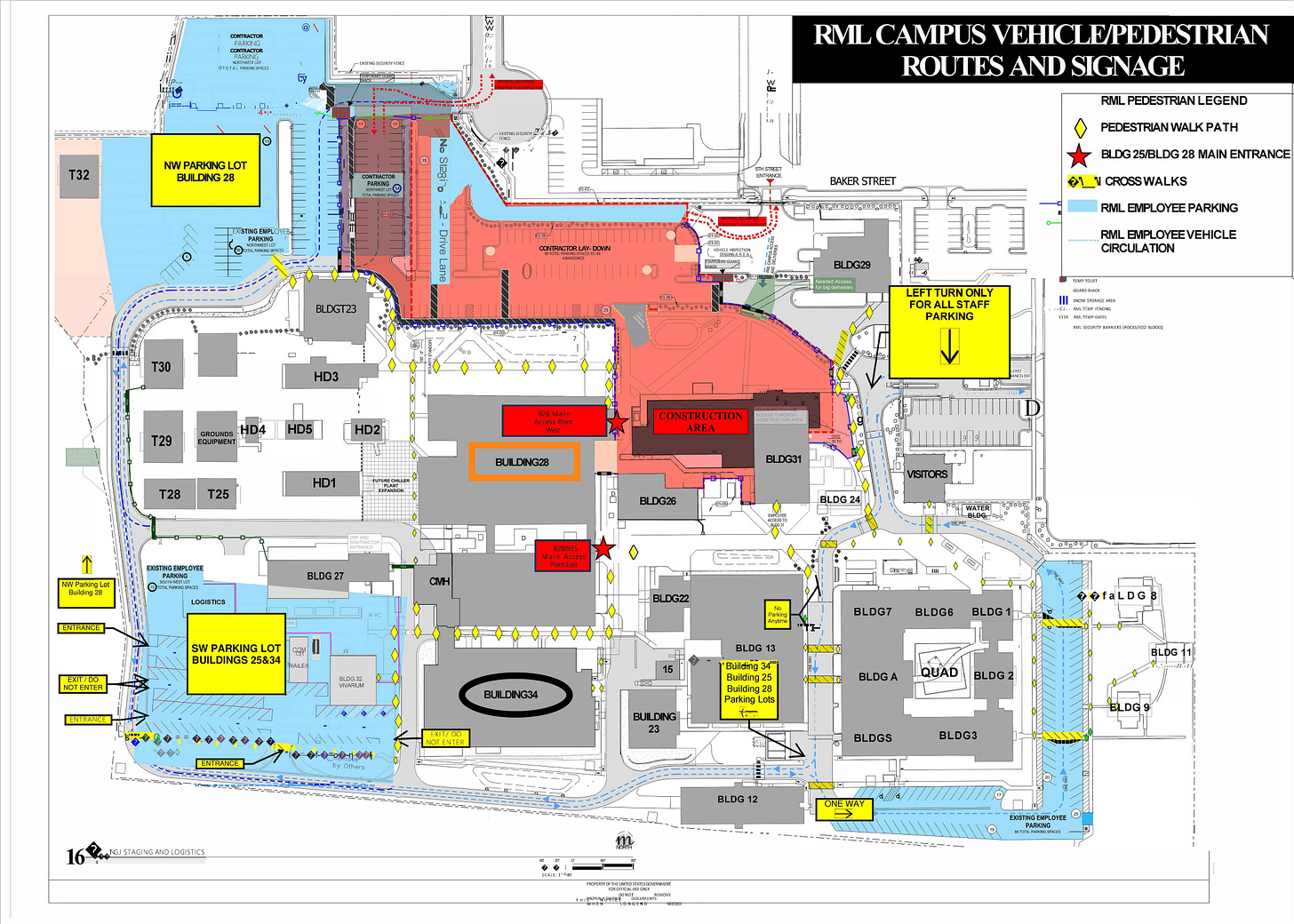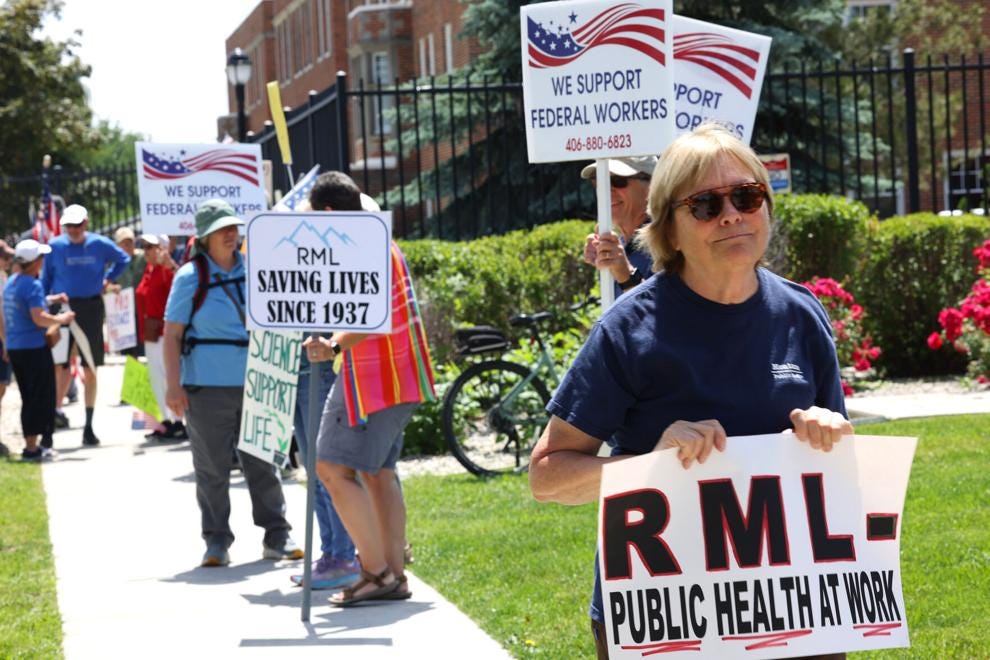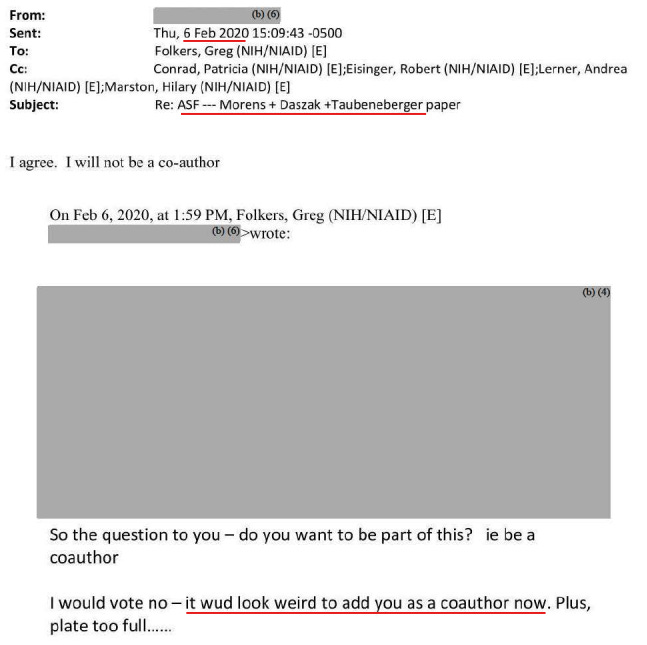Is the NIH Director Suspicious of Rocky Mountain Lab?
And a midnight power outage at RML
The new NIH director, Jay Bhattacharya, was once dismissed as a “fringe” scientist by his predecessor, Francis Collins. Bhattacharya had published an early COVID-19 antibody study in April 2020, suggesting that the virus’s mortality rate was one-tenth of the official estimate of 2–3%, closer to that of the seasonal flu.
These prevalence estimates represent a range between 48,000 and 81,000 people infected in the San Francisco area by early April 2020, or 50-85-fold more than the number of confirmed cases.
Conclusions: The population prevalence of SARS-CoV-2 antibodies implies that the infection is much more widespread than indicated by the number of confirmed cases. Population prevalence estimates can now be used to calibrate epidemic and mortality projections.
Bhattacharya’s estimate of 0.2–0.3% fatality proved closer to reality than most predictions. The pandemic’s 100% infection rate and 99.9% survival rate were the first hints of something strange — a virus behaving like a self-spreading vaccine.
The second clue was immune evasion, or asymptomatic spread — described by Bhattacharya and his Stanford colleagues early in the pandemic. Immune evasion is the moral hazard of self-spreading vaccines: the feature that allows a viral vector to replicate and shed quietly.
Transmissible vaccine research will create an incentive to explore ways of engineering viral vectors to evade the immune response, as any pre-existing immunity to the vaccine vector will slow vaccine spread.
Bhattacharya and two colleagues then signed the Great Barrington Declaration, which questions the science behind the pandemic lockdown. Fauci's response to Collins compared the three authors to AIDS denialism promoted by eccentrics like Peter Duesberg, Harry Rubin, and Kary Mullis.
The City-State of Science
In a masterstroke of trolling, the new Trump administration — with RFK Jr. as HHS Secretary — nominated Bhattacharya to replace Collins. The Stanford professor, a skeptic of mRNA vaccines and a supporter of the lab leak theory, was confirmed in April 2025.
On May 1, the Brownstone website ran Will Jones’ article on Rocky Mountain Lab. Bhattacharya is both a reader and writer on that website. Weeks later, he raised the issue of a Wuhan lab leak in front of a group of NIH employees, prompting a protest as they walked out.
A couple of the 18,000 NIH staffers were public with their hatred of the new boss:
NIH insiders described Bhattacharya as “arrogant,” “in over his head,” “out of his league,” “out of his depth,” “clueless,” “weak,” and “full of shit.”
The NIH campus in Bethesda, Maryland, is a semi-autonomous city-state with a $50 billion budget, or the seventh-largest military budget in the world. Its parent agency, HHS, under RFK Jr, commands a $1.7 trillion budget — double that of the Pentagon.
In Chapter 19, “The Bethesda Boys,” I describe the Bethesda campus as a 30-minute subway ride from the Capitol and the White House, complete with its own shuttle system, police force, radio station, top-secret SCIF, wild deer, and a $182 million BSL3 facility. But the NIAID action was always in Hamilton, Montana.
Despite being 2,000 miles from Bethesda, Fauci stressed that 2009 technology made Rocky Mountain Labs (RML) feel “just across the street” from his Bethesda office. Video conferencing enabled RML scientists to participate directly in NIAID meetings, thereby eliminating the distance. Fauci framed this remote setup as an asset rather than a liability, pointing to RML’s cutting-edge new BSL4 labs under Heinz Feldmann and its appeal as a rural, world-class research hub. In his view, RML was not a satellite, but an integral extension of NIAID’s work and culture.
Jay flies to Montana
Fauci, as head of NIAID, made annual pilgrimages to his biodefense outpost in Montana. His last visit was in October 2019, oddly timed before the pandemic, when RML rolled out the red carpet. Fauci met for one hour with Feldmann, who had previously disclosed his research on self-spreading vaccines. But Fauci always kept his NIH bosses in the dark about RML research.
By contrast, in June 2025, Jay Bhattacharya became the first NIH director in three decades to tour the Hamilton campus. Instead of red carpets, he was met by a handful of protestors angry over layoffs tied to the DOGE government efficiency “purge.”
In Chapter 26, “The Proximal Origin of SARS-CoV-2,” I describe Hamilton, Montana, as epitomizing small-town America: a closed K-Mart, a lone McDonald’s, no Walmart, and Trump-country politics.
Yet 10% of the town works at the “Lab.” Five hundred scientists from around the world now occupy 30 buildings on a 30-acre campus. The lab began a hundred years ago as a tent for studying Rocky Mountain spotted fever.

Building 34 — marked by the black circle — is the new BSL4 bat lab for Vincent Munster and Heinz Feldmann, complete with positive-pressure suits and negative-pressure containment for their live bat experiments.
Building 28 — marked by the orange square — was the older BSL4 lab. In late 2016, it suffered three power outages that briefly knocked out negative pressure, a failure severe enough to reach Fauci’s inbox. Around the same time, Munster and Feldmann were testing self-spreading vaccines. Two years earlier, in 2014, Fauci told Collins that Feldmann was developing a “new vaccine platform [CMV] targeting wildlife vaccination.” But it was only tested in a mouse model and “very early stage of development.”
Red zone construction: a $25 million BSL2 bat breeding facility. Munster’s early COVID-19 vaccine trials used Egyptian fruit bats in Montana but required Dani Anderson’s testing on Chinese bats in Wuhan.
The new Montana facility eliminates that need. Since Munster developed COVID-19 in the older building 28 using an American lab bat (Egyptian fruit bats), they had to test a Chinese bat vaccine in Wuhan (with Dani in the Wuhan BSL4).
Now Munster won’t have to send his bat vaccines to Wuhan for testing; he can breed live Chinese horseshoe bats in the BSL2, and walk from Building 28 to 34 to test!
Dani’s boss, Linfa Wang, said feeding insect-eating Chinese bats in a BSL4 suit is nearly impossible. He recalled, “We will never do that again.”
Munster used the easy-to-feed and breed fruit bats as a proxy for Chinese bats. But Chinese bats are similar to Chinese Pandas; they are difficult to feed and breed in captivity. The Wuhan Institute of Virology, however, patented cages and feeding systems, enabling Dani’s access to live Chinese horseshoe bats for Munster’s vaccine trial.

Recognizing his mistake, Fauci’s final act before retiring in 2022 was approving $125 million for the Montana bat breeding lab.
This new RML facilty will be a three-story [bat] vivarium facility, plus interstitial and mechanical support spaces, totaling 120,000 gross square feet. It will contain 35 holding rooms, 28 procedure rooms and 24 specialty rooms along with autoclaves and cage washrooms. This new [bat] vivarium facility will provide important program support including all Biosafety Level 2 (BSL-2) breeding, holding and experimental programs, as well as quarantine for animals destined for BSL-3 and BSL-4 studies in laboratories at RML. The new facility will provide expanded capabilities for studies with exotic species along with special imaging equipment, histopathology and a multi-vector insectary.
Bhattacharya toured the RML vivarium earlier this year. Did he know that high-maintenance Chinese horseshoe bats will be born and raised on US soil? He mentioned this Montana visit while interviewing Fauci’s NIAID successor, Jeffrey Taubenberger, in Francis Collins’ old NIH office.
The exchange was awkward. Bhattacharya mentioned Wuhan and the 1977 Russian flu as examples of lab leaks. Taubenberger co-authored one of the first Wuhan denial papers in February 2020, which claimed:
The Greek myth of Pandora’s box (actually a pithos, or jar) comes to mind: the gods had given Pandora a locked jar she was never to open. Driven by human weaknesses, she nevertheless opened it, releasing the world’s misfortunes and plagues.
Of course, scientists tell us that SARS-CoV-2 did not escape from a jar: RNA sequences closely resemble those of viruses that silently circulate in bats, and epidemiologic information implicates a bat-origin virus infecting unidentified animal species sold in China’s live-animal markets.
The jar was Dani’s BSL4 in Wuhan, but the manufacturing plant was in Montana. The first clue was the mink outbreak in Western Europe. That species isn’t found in China but is kept at RML.
Early in the pandemic, Munster at RML published a fraudulent study claiming that COVID transmission occurred on surfaces and that airborne transmission was only “plausible.” Collins grew wary of that study after noticing that Munster had used pure viral prep instead of natural transmission. That’s because Munster was hiding the fact that his lab contained all 5 transmission models for COVID.
Collins later asked Fauci, who is NIAID’s mink expert, since I’m having flashbacks to the sneezing ferrets? Fauci pointed to Jeffrey Taubenberger for expertise on ferrets — but sidestepped Munster’s mink research at RML.
Taubenberger, Peter Daszak, and David Morens went on to blame the “crowded world” of humans, not the exclusive domain of virologists playing god with nature’s nastiest viruses.
Daszak and Morens later became so toxic that Fauci claimed not to know them, even though they had discussed adding Fauci as a co-author to this February 2020 cover-up paper.
At the 5:00 mark of the above interview, Taubenberger describes how “cool” it was to find century-old frozen corpses from the 1918 Spanish flu, which killed 50-100 million. To commemorate the 100th anniversary of the deadly pandemic, RML resurrected the virus using ferrets in 2018. Why wasn’t this gain-of-function research? Because it didn’t have a furin cleavage site, like that found in SARS-CoV-2.
Ironically, Baric and Munster inserted a furin cleavage site in SARS-CoV-2 to enable the bat vaccine to spread infinitely.
The new RML Chinese bat lab will formally be called the Rocky Mountain Comparative Medicine Center (RCMC) and was made possible through the $2.2 trillion Coronavirus Aid, Relief, and Economic Security (CARES) Act, signed into law by President Trump in March 2020.
Smoking gun email
The Linfa Wang of America was in Fort Collins, Colorado. His name is Tony Schountz, a bat immunologist at Colorado State University. Schountz bred all of Munster’s bats.
A third-party lab animal vendor once charged RML approximately $100,000 for just 24 bats. For the PREEMPT project, DARPA paid Schountz about $1,000 per Egyptian fruit bat. With a live bat colony of roughly 200, that came to $200,000.
That arrangement set up one of the strangest twists in the origin story. Munster’s new vivarium in Montana would eventually allow him to breed bats in-house — but until then, Schountz kept his bats in Colorado. That logistical detail produced the “smoking gun” email.
Cornell professor on Baric
Dave Collum, Chair of Organic Chemistry at Cornell University, says COVID-19 was made in Ralph Baric's lab at UNC.
Curious how Covid got to Wuhan?
In 2015, Baric of UNC shipped a set of frozen vials (1mL each) containing Venezuelan Equine Encephalitis (VEE) virus replicon particles engineered to express the MERS coronavirus spike protein to Munster in Montana. The purpose? To immunize Fauci’s and Munster’s camels.
The results of the MERS camel vaccine were unclear and were never published. However, Baric accused RML of fraudulent animal research, which led to an argument at a 2016 NIAID meeting. Baric then installed one of his UNC technicians at RML. It appears they resolved the issues by 2018, as they were collaborating on vaccinating Egyptian fruit bats.
If Fauci, Munster, and Baric were vaccinating camels for MERS, don’t doubt their resolve to vaccinate bats for SARS in Wuhan. Also in 2018, a similar vaccine concept was proposed in the DARPA Defuse proposal, where Baric outlined plans to vaccinate Chinese bats using virus replicon particles (VRPs) expressing the spike protein from HKU3-Smix, now known as SARS-CoV-2.
Other RML incidents
In 2011, a Hamilton neighbor of the “Lab” emailed a noise complaint and bitched about lost property values. In 2012, an RML scientist was caught using non-approved strains of antibiotic-resistant plague bacteria. In 2014, an African rat infected with Lassa escaped its cage but was later found. In 2017, an RML technician suffered a clean needlestick during a Nipah experiment. All these incidents reached Fauci’s inbox, but, other than the rat, none of them had become public until now.







To hell with the RML, what he should look at is the CDC’s vector production facility in Ft. Collins where they breed ticks, mosquitos and fleas
Wow, that’s a facility I never entered. I had no idea. Thanks for this.